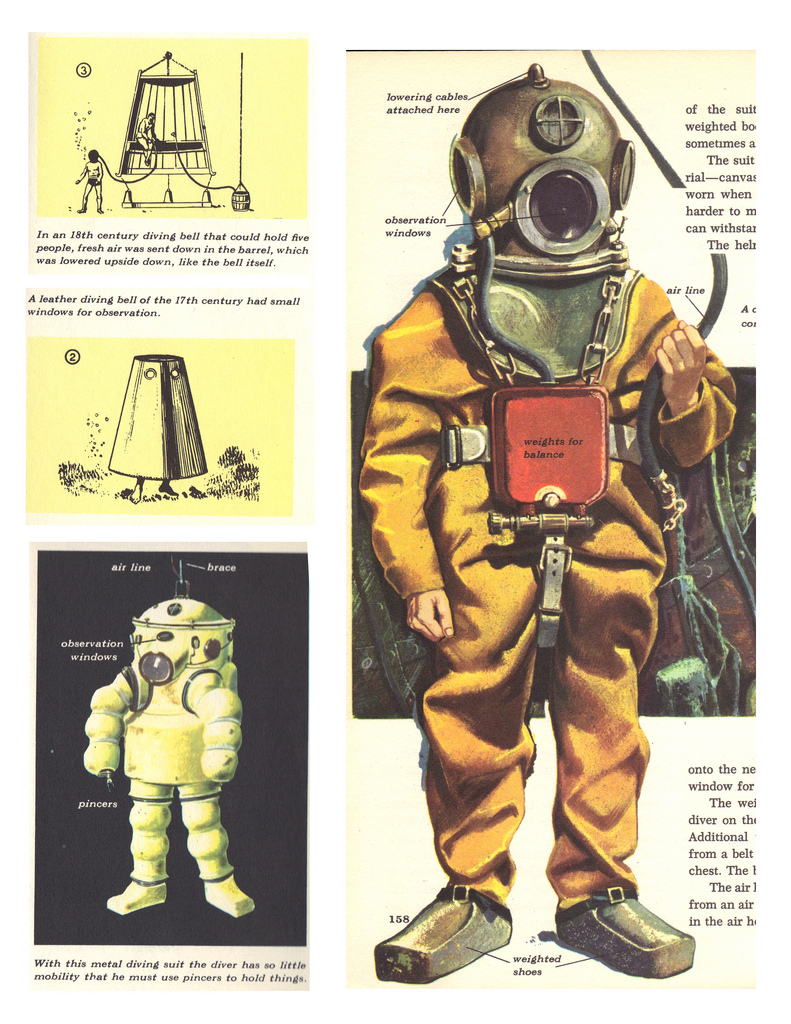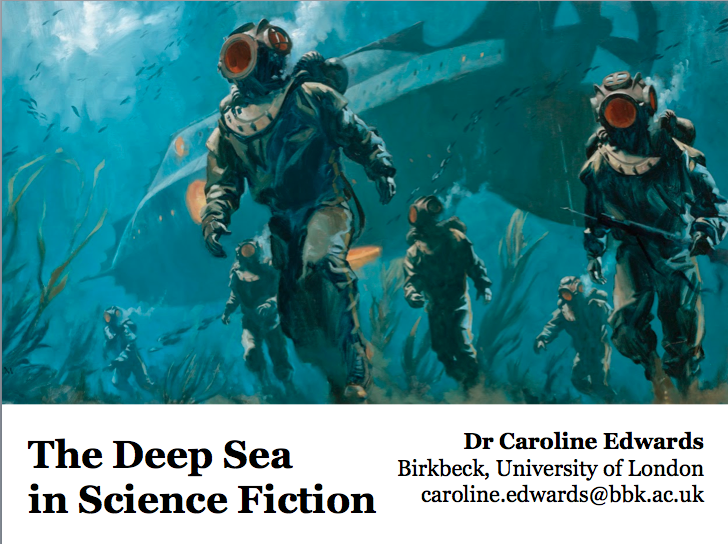The Deep Sea
I'll be joining artist Tania Kovats on Saturday 2nd May 2015 for a fantastic day of talks at the Wellcome Collection, curated by the Invisible Dust project as part of the "Incredible Encounters with Light" event. Bringing together artists, scientists, writers and researchers, Incredible Encounters with Light will explore the ways in which light can be considered – from using fluorescent markers to study zebrafish or analysing the diverse marine ecology of the deep ocean, to solar technologies, heliotherapy, ocean conservation and bioluminescence.
Our panel is titled "What Lies Beneath" and my talk will consider "The Deep Sea in Science Fiction." I'll be considering representations of the deep sea from two perspectives: (1) the unknown; and (2) the unconscious. I'll start the talk by briefly considering historical precursors such as Margaret Cavendish's The Blazing World (1666) and Alfred Lord Tennyson's 1830 poem "The Kraken," which brought together the Norse legend of a giant sea-monster with contemporary accounts of geology and natural history which challenged Biblical accounts of geological time (primarily Charles Lyell's Principles of Geology [1830-33]). Then I will discuss Jules Verne's voyages extraordinaires, which explore both outer space as well as the submarine spaces of the deep sea, considering 20,000 Leagues Under the Sea (1870). I'll also look at mid-20th-century depictions of the monsters of the deep, with a brief look at the 1950s B movie "creature features" which built on a pre-existing fan base for pulps and comics in an age of Cold War nuclear anxieties and paranoia. John Wyndham's The Kraken Wakes (1953) is an exemplary deep sea text, which brings together the alien invasion narrative pioneered by H. G. Wells in The War of the Worlds (1898) with conteporary scientific accounts of the deep sea. I'll finish the talk with a look at the New Wave SF of the 1960s, focusing in particular on the function of "inner space" in J. G. Ballard's The Drowned World (1962). Here, we see the depths of a post-ecocatastrophe world of rising sea levels, lagoons populated by giant lizards, and a Second Triassic age offering a surrealist landscape which pulls its narrator into a "descent through archaeopsychic time" and a "devolutionary descent" into the compelling "time-sea" of the drowned world. Bringing a Jungian inner space to bear on the outer space of a submarine world depicted in galactic terms, returns us to our opening question of the symbolic relation between the deep sea and outer space.
Click here or on the image below to download the PowerPoint presentation slides which accompanied this talk.
Featured image by Didi under a CC BY-NC-SA license.

















 Dr Caroline Edwards is Senior Lecturer in Modern & Contemporary Literature at Birkbeck, University of London. Her research and teaching specialisms are in 21st century literature and critical theory, science fiction and post-apocalyptic narratives, Marxist aesthetics, and utopianism.
Dr Caroline Edwards is Senior Lecturer in Modern & Contemporary Literature at Birkbeck, University of London. Her research and teaching specialisms are in 21st century literature and critical theory, science fiction and post-apocalyptic narratives, Marxist aesthetics, and utopianism.
Hello,
I was wondering if you could tell me the name of the artist of the main picture, the one with the deep sea divers. Thank you.
Hi, the image is taken from the cover of the Macmillan Collector's Library edition of Jules Verne's Twenty Thousand Leagues Under the Sea (see here: https://www.amazon.co.uk/d/Books/Twenty-Thousand-Leagues-Under-Macmillan-Collectors-Library/1509827870). I'm not actually sure who the artist was, sorry!
Oh wait, I think the artist is Gregory Manchess – painting and draftwork discussed in this blog post: http://muddycolors.blogspot.co.uk/2014/07/20000-leagues-under-sea.html